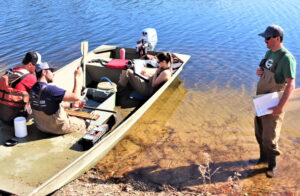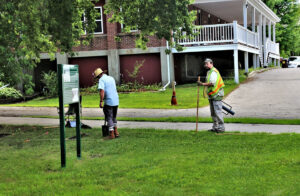CEMML provides effective and environmentally sound solutions for controlling invasive species and developing/implementing biosecurity procedures.
Invasive Species and Biosecurity Services
Invasive Species
- Baseline and early detection surveys to locate and delineate existing invasive plants, insects, and animals and identify new ones before they become established.
- Programs for management of invasive species.
- Research on new and innovative methods for controlling invasive species.
- Experienced staff hold pesticide applicator licenses and certifications.
Biosecurity
- Quality Assurance/Quality Bio-sanitation procedures to verify that cargo is free of invasive species and meets federal pest management standards.
- Standard Operation Procedures for invasive species rapid response plan and team capacities to contain outbreaks in the field.
- Integrated approaches to managing risks to humans, native species, and agriculture from invasive species.
- Strategic planning to limit the spread of invasive organisms and diseases.
- Site-specific programmatic pathway risk assessments and analyses.
Email Invasive Species and Biosecurity Services inquiries to cemml@colostate.edu.
Other CEMML Natural Resources Management Services
Latest CEMML Stories

Sharing the beach: CEMML supports snowy plovers and communities in California
In 2020, Vandenberg Space Force Station and CEMML began providing educational programs at local elementary schools to spread awareness about the snowy plover, a rare migratory shorebird currently listed as threatened under the federal Endangered Species Act. Over 600 students have participated in the program since the program began.

CEMML conducts surveys to aid fisheries management at Fort McCoy
Every year, watershed management biologists and specialists with CEMML, in partnership with Fort McCoy’s Directorate of Public Works Environmental Division Natural Resources Branch (NRB), hold fish surveys at Fort McCoy’s 10 lakes and ponds. Surveys are conducted using various methods to understand fish populations and the overall health of the waterways.

CEMML archaeological survey explores early 20th century history of Fort McCoy
An archaeological survey conducted by CEMML personnel in the summer of 2022 was initially meant to investigate the creation of several hundred concrete tent pads at Fort McCoy, Wisconsin. Research into the tent pads, dating from around the early 20th century, also unearthed additional information about other possible known archaeological features and sites around what is referred to as “Old Camp McCoy.”
Share this page on social media